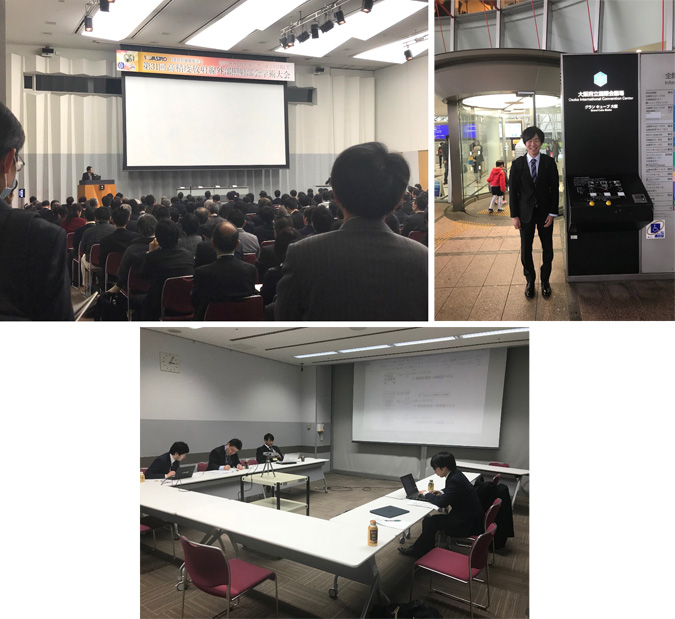2018.2.10:The 31st Annual meeting of High-precision External Beam Radiotherapy Group/JASTRO
Dr. Kadoya, and Mr. Sato (M1) have attended The 31st Annual meeting of High-precision External Beam Radiotherapy Group/JASTRO for presentation. Dr. Nakajima (D2) has attended it in Osaka International Convention Center, Osaka, Japan on February 10, 2018.
■Date: 2018.2.10
■Venue: Osaka International Convention Center, Osaka, Japan
■Conference name:The 31st Annual meeting of High-precision External Beam Radiotherapy Group/JASTRO

Shinya Satou(M1)
We are pleased to report that Dr. Kadoya and Mr. Sato(M1) gave oral presentations and Mr. Nakajima(D2) participated in the 31st Annual Meeting of the High Precision Radiation External Irradiation Division held on February 10, 2018 at the Osaka Prefectural International Convention Center.
In recent years, with the development of radiotherapy, high-precision treatments such as IMRT, stereotactic radiotherapy and particle therapy have made great progress. As a result, treatment outcomes have improved and the demand for radiotherapy is growing more and more. However, only technology has taken the lead, and there has been little examination of what these biological effects are. Therefore, the 31st Annual Meeting of the High Precision Radiation External Irradiation Division was held under the theme of “Toward the Integration of Medical Physics and Radiation Biology.
At this conference, a special lecture on radiation medicine, “Future Prospects: AI Sitel, Radiomics,” was given. In this lecture, prominent professors reported on the current status and problems of radiomics research, which has been attracting a great deal of attention in recent years, and some parts of the lecture overlapped with their own research, making it a very useful lecture for future research. Many discussions took place during the lecture and I was able to reconfirm the high level of attention in the medical field.
I presented my research on the usefulness of CT-based Radiomics for prognosis prediction in pulmonary SBRT patients. Radiomics aims to predict prognosis based on radiomic features obtained from images. However, it has been reported that the values of radiomic features vary depending on the CT equipment, imaging conditions, noise, and other factors, and the results vary among researchers. Therefore, analysis using our data has the potential to create a better prognostic program. Since more consistent and highly accurate results are required in the field of radiomics, I hope to continue this research and present it at various conferences in the future.
I also participated in a research meeting that Dr. Kakutani and Dr. Nakajima are conducting with doctors at Hiroshima University Hospital. It was a very valuable experience for me to learn things that I cannot learn in my daily studies, which I have to do in order to introduce the results of my research into clinical practice.
Last but not least, I would like to apply the knowledge I gained from this conference to my own research and clinical practice. I would like to take this opportunity to thank everyone who gave me this opportunity. Thank you very much.
